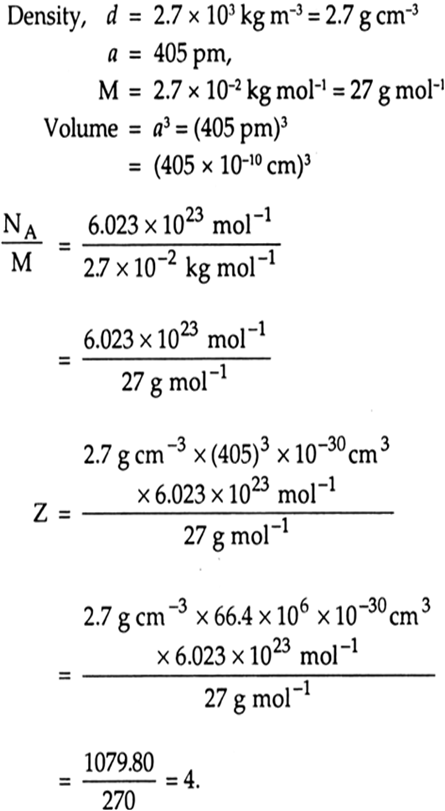A compound is formed by two elements M and N. The element N forms ccp and atoms of M occupy 1/3 of tetrahedral voids. What is the formula of the compound?
The number of tetrahedral voids formed is equal to twice the number of atoms of element N and only 1/3rd of these are occupied by the atoms of element M. Hence the ratio of number of atom of M and N is 2 x (1/3) : 1 or 2 : 3. So the formula of the compound is M2 N3.






